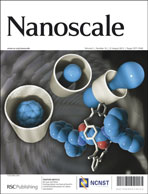Silicon supplementation has been shown to play an important role in skeleton development, however, the potential role that silicon plays in mediating bone formation, and an understanding of where it might localise in the resulting bone tissue remain elusive. An improved understanding of these processes could have important implications for treating pathological mineralisation. A key aspect of defining the role of silicon in bone is to characterise its distribution and coordination environment, however, there is currently almost no information available on either. We have combined a sample-preparation method that simultaneously preserved mineral, ions, and the extracellular matrix (ECM) with secondary ion mass spectroscopy (SIMS) and electron energy-loss spectroscopy (EELS) to examine the distribution and coordination environment of silicon in murine osteoblasts (OBs) in an in vitro model of bone formation. SIMS analysis showed a high level of surface contamination from polydimethysiloxane (PDMS) resulting from sample preparation. When the PDMS was removed, silicon compounds could not be detected within the nodules either by SIMS or by energy dispersive X-ray spectroscopy (EDX) analysis. In comparison, electron energy-loss spectroscopy (EELS) provided a powerful and potentially widely applicable means to define the coordination environment and localisation of silicon in mineralising tissues. We show that trace levels of silicon were only detectable from the mineral deposits located on the collagen and in the peripheral region of mineralised matrix, possibly the newly mineralised regions of the OB nodules. Taken together our results suggest that silicon plays a biological role in bone formation, however, the precise mechanism by which silicon exerts its physicochemical effects remains uncertain. Our analytical results open the door for compelling new sets of EELS experiments that can provide detailed and specific information about the role that silicates play in bone formation and disease.

You have access to this article
 Please wait while we load your content...
Something went wrong. Try again?
Please wait while we load your content...
Something went wrong. Try again?


 Please wait while we load your content...
Please wait while we load your content...